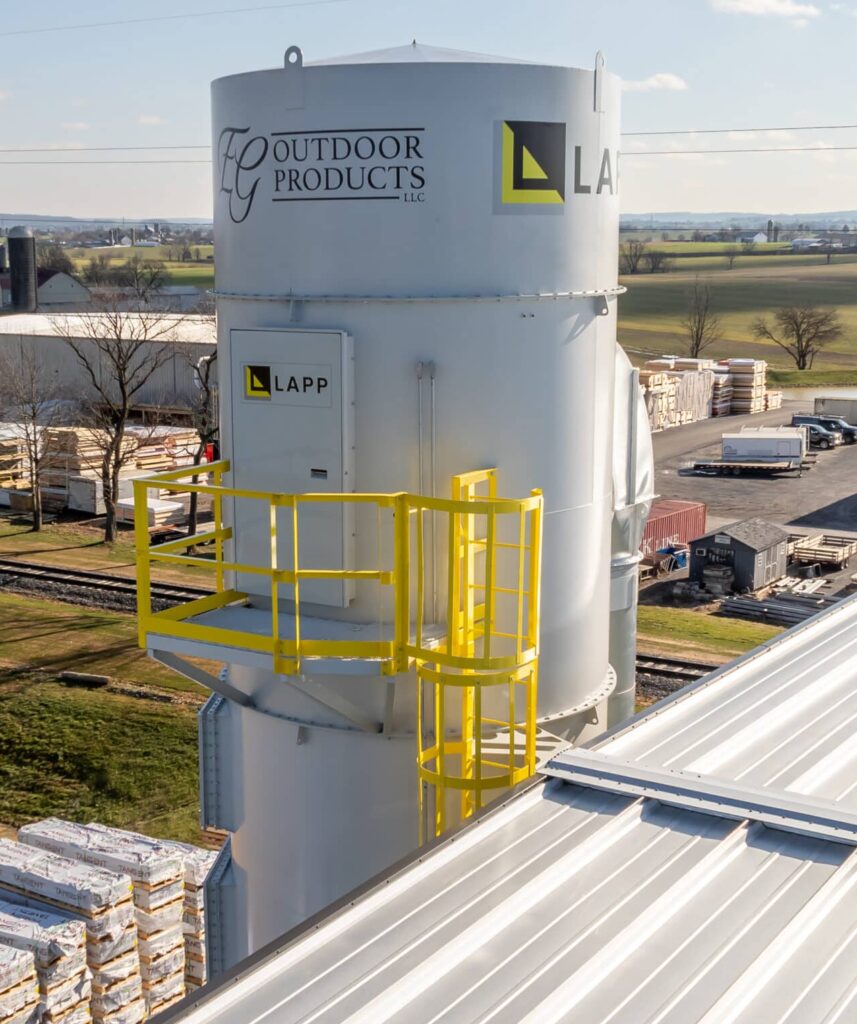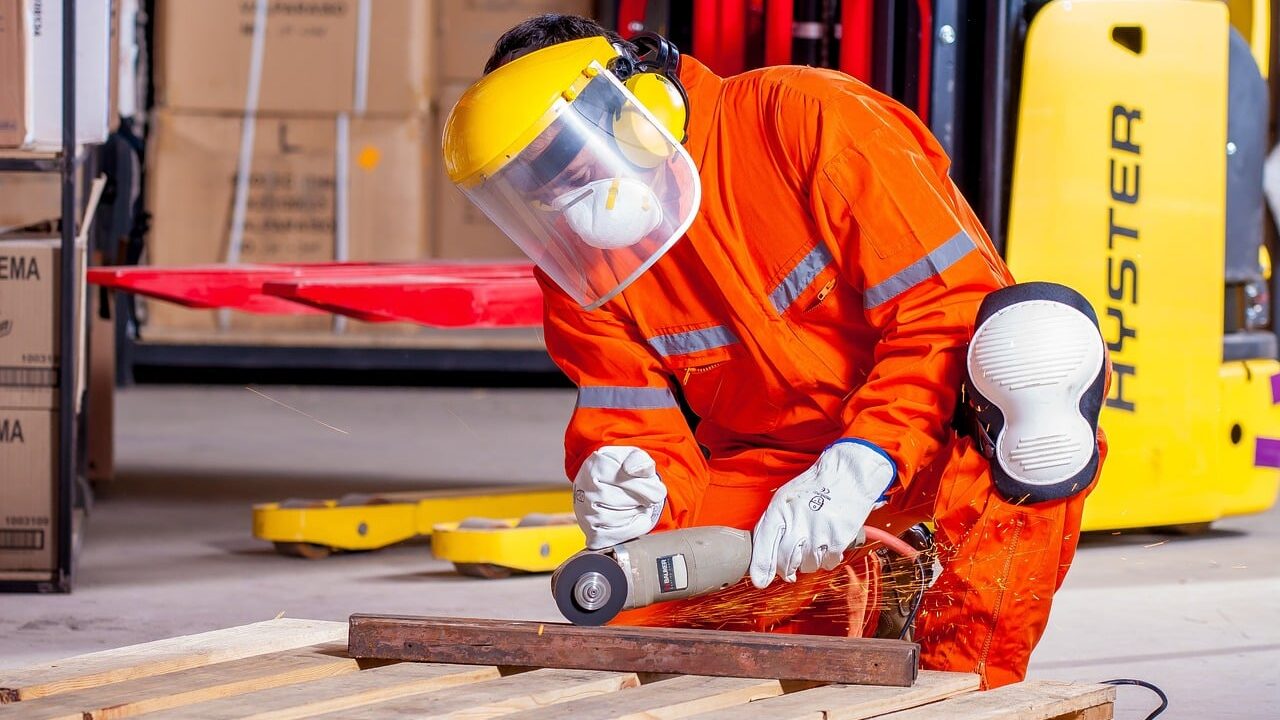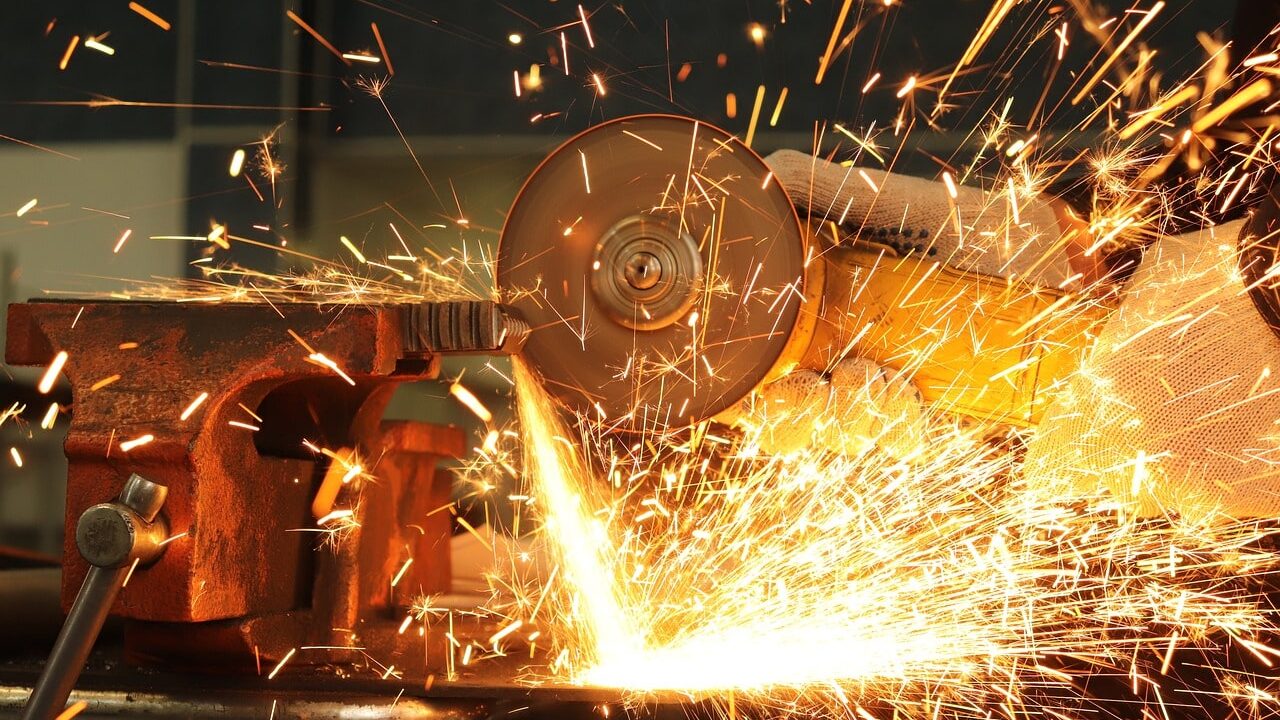
In the industrial landscape, ensuring compliance with regulatory standards is paramount to safeguarding worker safety and mitigating operational risks. Among the myriad of regulations, the guidelines set forth by the National Fire Protection Association (NFPA) hold particular significance, especially concerning the management of smoke, dust, and fumes in industrial settings. In this blog, we explore why smoke, dust, and fume collection systems are indispensable for achieving NFPA compliance and maintaining a safe work environment.

Industrial facilities often generate significant amounts of airborne particulates, including dust, fumes, and smoke, as byproducts of various processes such as welding, cutting, grinding, and material handling. Left unmanaged, these airborne contaminants not only pose health risks to workers but also increase the likelihood of fire hazards, leading to potential damage to property and equipment.
NFPA standards provide clear guidelines for controlling these hazards, emphasizing the importance of effective containment and extraction of airborne particles to minimize the risk of fires and protect workers from respiratory ailments. Implementing robust smoke, dust, and fume collection systems is thus essential for industrial facilities to align with NFPA regulations and uphold a safe working environment.
These collection systems function by capturing and removing airborne contaminants at the source, preventing their dispersion into the surrounding air. By utilizing various technologies such as filtration, cyclonic separation, and electrostatic precipitation, these systems efficiently trap particulates before they can pose a threat to worker health or ignite under certain conditions.
Moreover, investing in high-quality collection systems not only ensures regulatory compliance but also offers additional benefits such as improved indoor air quality, reduced equipment maintenance costs, and enhanced productivity. By effectively managing airborne contaminants, industrial facilities can create a healthier and safer work environment for their employees while minimizing the risk of regulatory penalties and operational disruptions.
Mitigating Fire Hazards

NFPA standards, such as NFPA 652 for combustible dust, aim to prevent fire and explosion hazards in industrial facilities. Combustible dust, when suspended in the air in sufficient concentrations, can ignite and propagate explosions with devastating consequences. By implementing effective dust collection systems, industrial facilities can capture combustible dust particles before they accumulate to hazardous levels, significantly reducing the risk of dust-related fires and explosions.
NFPA 652 establishes comprehensive guidelines for managing combustible dust hazards, outlining requirements for hazard assessment, mitigation strategies, and employee training. This standard emphasizes the importance of identifying dust hazards, evaluating their potential impact, and implementing appropriate control measures to minimize the risk of fires and explosions.
One key aspect of NFPA 652 is the requirement for industrial facilities to conduct a thorough dust hazard analysis (DHA) to identify and assess potential dust hazards present in their operations. This analysis involves evaluating factors such as dust particle size, concentration, and combustibility to determine the level of risk posed by combustible dust accumulations.
Once dust hazards are identified, NFPA 652 mandates the implementation of effective dust control measures to mitigate the risk of ignition and propagation. This includes the installation of dust collection systems capable of capturing and containing combustible dust particles before they can pose a hazard.
Effective dust collection systems employ various technologies such as dust collectors, cyclones, and air filtration systems to capture and remove dust particles from the air. These systems are strategically designed to prevent the accumulation of combustible dust in critical areas, reducing the likelihood of dust-related fires and explosions.
Protecting Worker Health

Exposure to airborne contaminants, including smoke, dust, and fumes, poses significant health risks to workers. Prolonged inhalation of these particles can lead to respiratory ailments, lung diseases, and other adverse health effects. NFPA-compliant smoke, dust, and fume collection systems effectively capture and remove airborne contaminants from the work environment, minimizing workers’ exposure and promoting a healthier workplace.
The health impacts of airborne contaminants underscore the importance of prioritizing effective containment and extraction measures in industrial settings. Workers exposed to high levels of smoke, dust, and fumes are at risk of developing respiratory conditions such as asthma, bronchitis, and chronic obstructive pulmonary disease (COPD). Additionally, certain airborne particles may contain hazardous substances or carcinogens, further increasing the potential health risks associated with exposure.
NFPA-compliant collection systems play a crucial role in mitigating these risks by capturing airborne contaminants at the source and preventing their dispersion into the surrounding air. By incorporating technologies such as high-efficiency particulate air (HEPA) filters, electrostatic precipitators, and wet scrubbers, these systems effectively remove harmful particles from the workplace environment, helping to safeguard the health and well-being of employees.
Furthermore, investing in NFPA-compliant smoke, dust, and fume collection systems demonstrates a commitment to employee safety and regulatory compliance. By aligning with NFPA standards, industrial facilities not only protect their workforce from potential health hazards but also mitigate the risk of regulatory penalties and litigation associated with non-compliance.
Preventing Equipment Damage

Smoke, dust, and fumes generated during industrial processes can also pose a threat to equipment integrity and performance. Accumulation of particulate matter on machinery and electrical components can impair their functionality and lead to premature failure. By incorporating robust collection systems, industrial facilities can mitigate the risk of equipment damage caused by airborne contaminants, ensuring smooth operations and prolonging the lifespan of critical assets.
The impact of airborne contaminants extends beyond worker health to encompass the reliability and longevity of industrial equipment. Dust, in particular, can infiltrate machinery and electrical systems, causing abrasion, corrosion, and overheating. Over time, this accumulation can compromise equipment performance, leading to costly repairs, downtime, and operational disruptions.
NFPA-compliant smoke, dust, and fume collection systems play a vital role in safeguarding equipment integrity by effectively capturing and removing airborne contaminants before they can settle on sensitive machinery and components. By preventing the buildup of particulate matter, these systems help maintain optimal equipment performance and minimize the risk of mechanical failures.
By preserving equipment integrity, robust collection systems contribute to overall operational efficiency and cost-effectiveness. Industrial facilities can avoid unplanned downtime and costly repairs associated with equipment malfunctions, thereby maximizing productivity and profitability.
Incorporating NFPA-compliant collection systems into industrial processes demonstrates a proactive approach to equipment maintenance and risk management. By investing in preventive measures to mitigate the impact of airborne contaminants, facilities can uphold the reliability and performance of their equipment assets while ensuring a safe and healthy work environment for employees.
Ensuring Regulatory Compliance

Compliance with NFPA standards is not only essential for maintaining a safe work environment but also for meeting regulatory requirements and avoiding potential fines and penalties. NFPA guidelines provide clear directives on the design, installation, and maintenance of smoke, dust, and fume collection systems to mitigate fire and explosion risks. By adhering to these standards and implementing compliant collection systems, industrial facilities demonstrate their commitment to safety and regulatory compliance.
NFPA standards serve as a comprehensive framework for ensuring the safe operation of industrial facilities, offering detailed guidance on various aspects of fire prevention and protection. In particular, NFPA standards such as NFPA 68 (Standard on Explosion Protection by Deflagration Venting) and NFPA 69 (Standard on Explosion Prevention Systems) outline specific requirements for managing combustible dust hazards and mitigating the risk of dust-related explosions.
Industrial facilities that fail to comply with NFPA standards may face serious consequences, including fines, penalties, and regulatory sanctions. Non-compliance not only jeopardizes worker safety but also undermines the facility’s reputation and credibility within the industry. Additionally, in the event of an incident or accident, regulatory authorities may conduct investigations to determine whether the facility was in compliance with applicable NFPA standards, potentially exposing the organization to legal liabilities and financial losses.
By proactively adhering to NFPA standards and implementing compliant smoke, dust, and fume collection systems, industrial facilities can mitigate these risks and ensure ongoing compliance with regulatory requirements. Investing in robust collection systems not only enhances workplace safety but also provides a solid foundation for regulatory compliance, thereby reducing the likelihood of fines and penalties.
Moreover, by prioritizing safety and compliance, industrial facilities can cultivate a positive safety culture and instill confidence among employees, customers, and stakeholders.
Enhancing Environmental Stewardship

Effective smoke, dust, and fume collection systems not only protect worker health and safety but also contribute to environmental stewardship by minimizing emissions and pollutants released into the atmosphere. By capturing and containing airborne contaminants, these systems help reduce air pollution and mitigate the environmental impact of industrial operations, aligning with sustainability goals and regulatory requirements.
Industrial activities are a significant source of air pollution, releasing various pollutants, including particulate matter, volatile organic compounds (VOCs), and hazardous gases, into the atmosphere. These emissions can have adverse effects on air quality, human health, and ecosystems, contributing to respiratory illnesses, smog formation, and environmental degradation.
NFPA-compliant smoke, dust, and fume collection systems play a crucial role in mitigating these environmental impacts by capturing harmful pollutants before they are released into the air. By effectively removing particulate matter and contaminants from industrial emissions, these systems help reduce the overall environmental footprint of industrial operations and promote cleaner air quality in surrounding communities.
In addition to protecting human health and the environment, implementing effective collection systems can also help industrial facilities meet regulatory requirements and comply with air quality standards. Many regulatory agencies impose strict limits on emissions of particulate matter, VOCs, and other pollutants, requiring industrial facilities to implement measures to control and reduce their environmental impact.
By investing in robust smoke, dust, and fume collection systems, industrial facilities can demonstrate their commitment to environmental stewardship and corporate responsibility. These systems not only help mitigate the negative effects of industrial activities on the environment but also contribute to building a sustainable future by reducing resource consumption and minimizing waste generation.
Drawing a conclusion on NFPA Compliance

In conclusion, smoke, dust, and fume collection systems are essential components of industrial facilities seeking to achieve NFPA compliance and uphold the highest standards of safety and regulatory adherence. By investing in NFPA-compliant collection systems, industrial facilities can mitigate fire and explosion hazards, protect worker health, preserve equipment integrity, and demonstrate their commitment to environmental stewardship.
Moreover, effective smoke, dust, and fume collection systems contribute to operational efficiency by minimizing downtime, reducing maintenance costs, and enhancing overall productivity. These systems not only ensure compliance with regulatory requirements but also promote a safer and healthier work environment for employees.
At Lapp Millwright LLC, we understand the importance of implementing reliable and efficient smoke, dust, and fume collection solutions tailored to your facility’s unique requirements. With our expertise in designing, installing, and maintaining NFPA-compliant collection systems, we can help you achieve optimal safety, regulatory compliance, and environmental responsibility.
Whether you are upgrading existing equipment or designing a new system from scratch, our team of experienced professionals is dedicated to providing personalized solutions that meet your specific needs and exceed your expectations. From initial consultation to ongoing support and maintenance, we are committed to delivering exceptional service and ensuring the success of your smoke, dust, and fume management initiatives.
Don’t compromise on safety, compliance, or environmental responsibility. Contact Lapp Millwright LLC today for expert guidance on implementing NFPA-compliant smoke, dust, and fume collection systems that enhance the safety, efficiency, and sustainability of your industrial operations.

